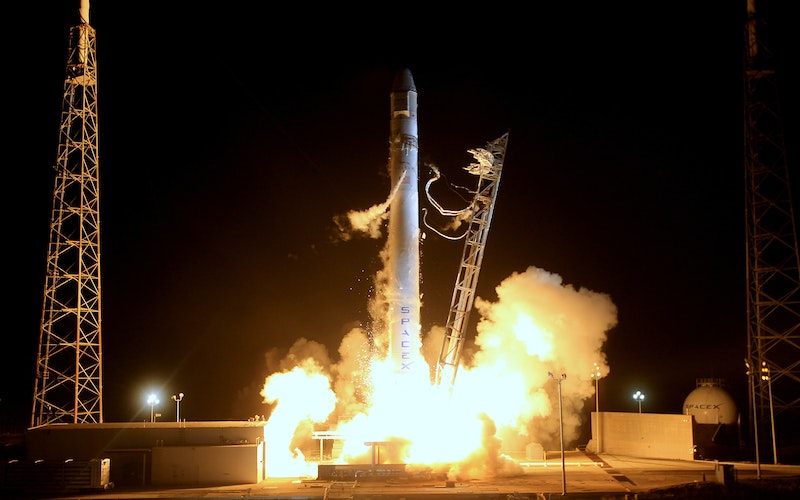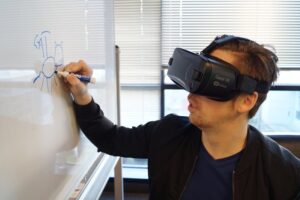Memory foam, freeze-dried food, cochlear implants, the OpenStack cloud computing platform, oil-free lubricants, and CMOS image sensors like the one in your smartphone: These are all examples of aerospace and defense industry-born innovations (sorry, Tang). In the near future, metaverse-based product development, manufacturing, operations, and maintenance may well join those ranks.
The aerospace and defense (A&D) business is amid a revolution in how it designs, engineers, builds, and maintains its products. Companies who aim to partner with A&D firms should take note. In short, embrace digital twin and digital thread or don’t bother.
No industry stands to gain more from digitalization than A&D. This is a business involving extraordinarily complex, extremely expensive, and fault-intolerant products we bet our national security on – and, every time we board a passenger jet, our lives on. Even when lives don’t hang in the balance, we’re talking about commercial and civil spacecraft worth hundreds of millions of dollars.
What’s compelling about digital twin and digital thread – digital twin being a continually updated virtual representation of a physical object; digital thread capturing the inputs and processes involved in creating and maintaining that digital twin – is that they enable product and process optimization in bits and bytes before a single real-world atom gets involved. They are flight simulators for the creation and maintenance of things that fly.
Among their benefits include the breaking down of silos between and within design, production, and operations and maintenance and the elimination of handoffs that drive inefficiencies and program risk; reduced cycle time; improved supply-chain resilience; vastly improved knowledge sharing around product development, R&D, and market analysis; better quality; and higher throughput. That all adds up to lower costs, less risk, and better results for customers.
Customer Driven
The industry itself is adapting at different rates. Digitalizing operations is easier for the sorts of digital-native upstarts that are pursuing low-earth orbit (LEO) communications constellations, space tourism, and advanced air mobility. But the entire industry – from household-names such as Boeing, Airbus, Lockheed Martin, Northrop Grumman and Saab on down to tier-3 suppliers proving small components – is transitioning to digital twin and digital thread. They have no choice because customers are demanding it.
As the U.S. secretary of the Air Force put it when rolling out its eSeries program, “the future of air and space technology will include aircraft, weapons, and satellites which will be digitally engineered and virtually tested before ever taking physical form.”
Other global militaries agree, and commercial and civil-government buyers aren’t far behind, because the benefits of digital twin and digital thread are clear (the Air Force’s inaugural eSeries program, which embraced model-based engineering and 3D design tools to build the eT-7A Red Hawk trainer, cut assembly hours by 80% and software development time in half), and the enabling technologies – foremost, the cloud – are mature.
The cloud and the digital transformation embodied in moving to the cloud are indispensable to digital twin and digital thread, and aerospace majors are launching executive-office centers of excellence to guide that transformation. As they do so, they’re reassessing not only internal operations and business process, but also how their entire supply-chain ecosystems can integrate and participate.
To wit: Two-thirds of A&D executives responding to a recent Accenture survey agreed that their competitive advantage would be more determined by the strength of their partners than by the solo actions of the A&D organizations themselves. Prospective A&D partners should take note.
Down the Chain
The goal is to eliminate superfluous complexity (A&D has enough inherent complexity, after all) and develop seamless information flow, the intelligent weaving together of operational as well as business processes, and, vitally, pervasive end-to-end product and process modeling throughout their supply chains. (Modeling has been a cornerstone of digital twin since NASA came up with the idea in the 1960s.)
Perhaps most exciting about digital thread and digital twin is that they lay the foundations for the exploitation of a nascent technology that stands ready to further revolutionize the A&D industry. That technology, the metaverse, has found itself somewhat tarnished by the travails (so far) of Meta’s Horizon Worlds. But in the A&D context, the arguments for it are powerful.
Immersive environments would allow everyone from a service technician on a flight line to an engineer working from a home office to pop on a headset and immerse themselves in a shared digital-twin view of a product (be it a fighter jet or one of its tires) in action. We humans tend to be visual creatures, and that holds doubly so for the sorts of humans involved in designing, building, operating, and maintaining aircraft, spacecraft, and all that supporting hardware and software.
The Metaverse is Much More than Meta
The metaverse will enable collaborative decision-making not only among product designers and engineers, but also among those in machine shops, manufacturing lines, and those doing maintenance, repair, and operations (MRO). Further, aerospace-industry leaders see enormous potential for the metaverse in enhancing the employee experience, whether it’s about learning new processes, reskilling, or upskilling.
The metaverse could be an important A&D industry weapon in the ongoing war for talent. This is no fringe viewpoint: That Accenture survey found that 54% of aerospace-industry executives queried think the metaverse will have a breakthrough and transformational impact on their organizations in the next four years, and 91 percent of them thought their organizations would benefit greatly from bringing augmented reality and virtual reality to their employees.
Given the creativity and brainpower resident in the A&D industry, product innovations and valuable spinoffs will keep coming. But there’s no innovation more impactful in the immediate future than the embrace of digital twin and digital thread that’s happening now. Prospective partners capable of helping the industry with this transition will find a receptive audience. Those who hope to become part of the A&D ecosystem should plan on embracing digitalization programs of their own.
Torsten Welte is Global Head of Aerospace & Defense Industries, SAP SE










